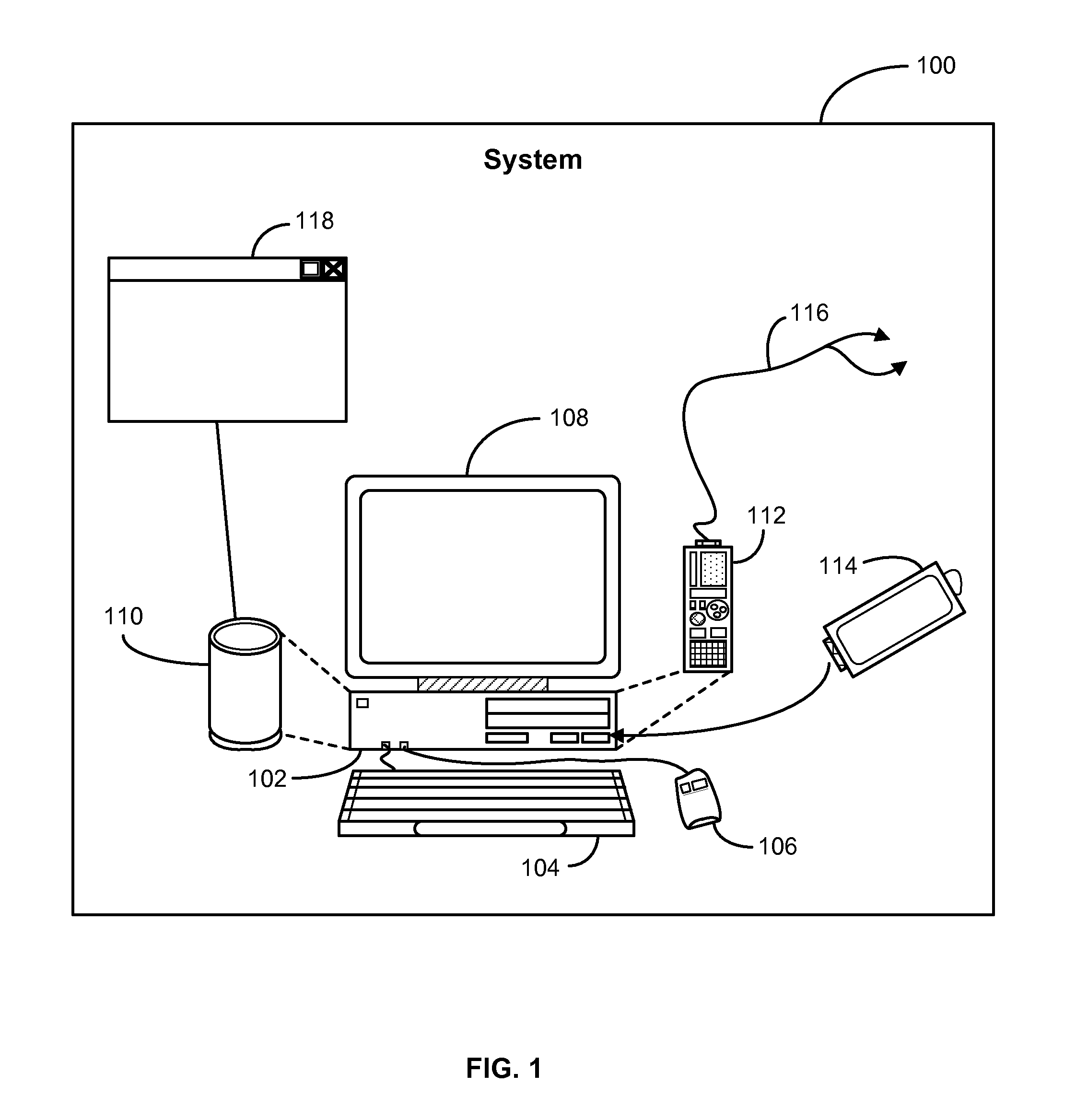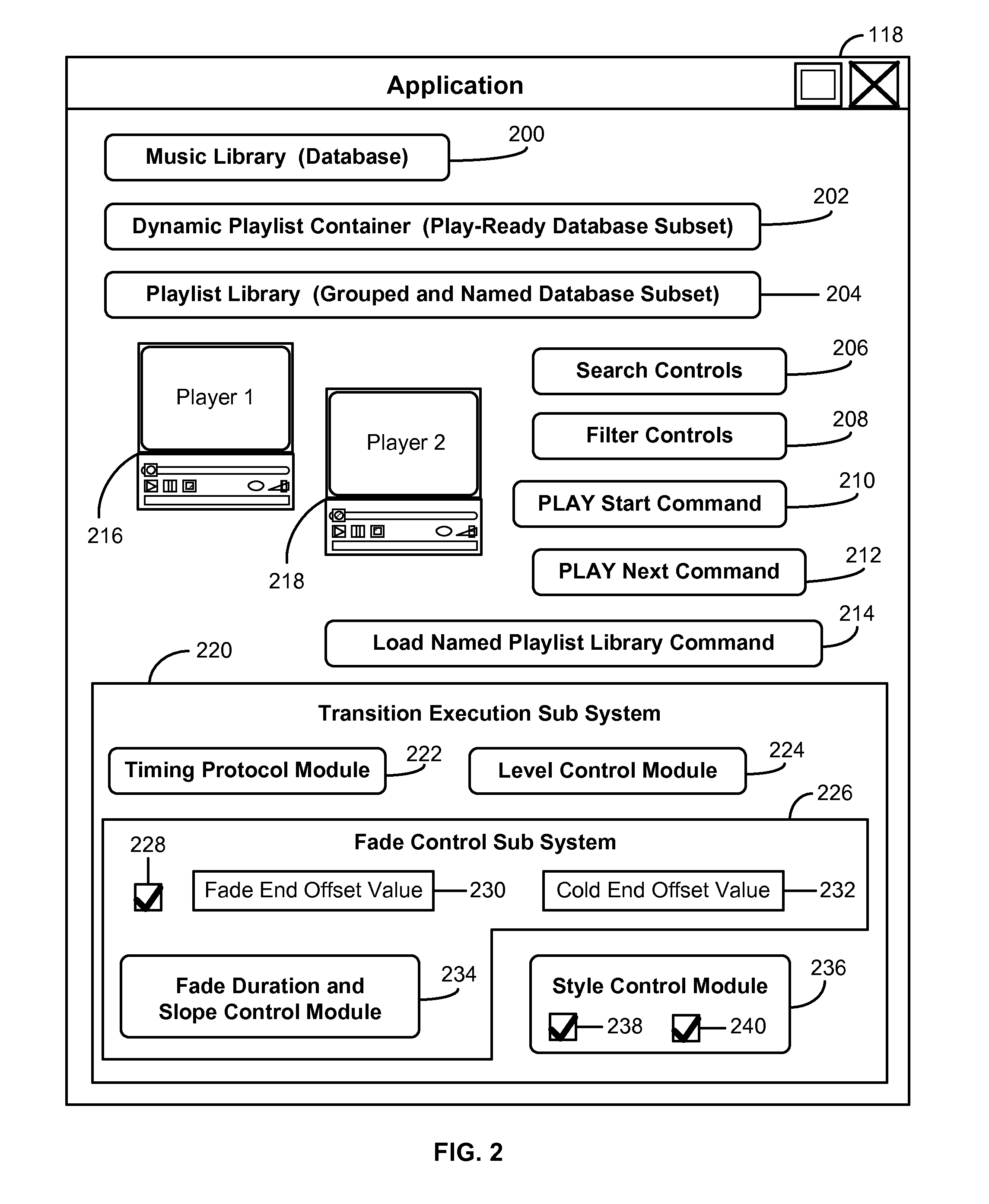Automatic calculation of digital media content durations optimized for overlapping or adjoined transitions
a digital media and transition duration technology, applied in the field of digital media content processing, can solve the problems of not automatically calculating the creative content duration of each media file, the design of professional-grade mixing (i.e., media file transition) only provides fully automated transitions
- Summary
- Abstract
- Description
- Claims
- Application Information
AI Technical Summary
Benefits of technology
Problems solved by technology
Method used
Image
Examples
Embodiment Construction
[0111]Among other things, techniques and systems are disclosed for improving implementation of the concurrent reproduction (i.e., sound rendering and mixing) capabilities of digital media players. In the following description, numerous specific details are set forth. However, embodiments of the invention may be practiced without these specific details. In other instances, well-known circuits, structures, and techniques have not been shown in detail in order not to obscure the understanding of this description.
[0112]In this specification, one embodiment, the preferred embodiment, will be described for a Microsoft® Windows® operating system (OS) computing device. The preferred embodiment is a computer program application powered by the Microsoft Access™ database program, which also provided the development interface. The embodiment was created primarily using Microsoft Visual Basic® for Applications (VBA). Additionally, some programming instructions were written in SQL (structured que...
PUM
| Property | Measurement | Unit |
|---|---|---|
| compatibility | aaaaa | aaaaa |
| volume | aaaaa | aaaaa |
| physical properties | aaaaa | aaaaa |
Abstract
Description
Claims
Application Information
 Login to View More
Login to View More - R&D
- Intellectual Property
- Life Sciences
- Materials
- Tech Scout
- Unparalleled Data Quality
- Higher Quality Content
- 60% Fewer Hallucinations
Browse by: Latest US Patents, China's latest patents, Technical Efficacy Thesaurus, Application Domain, Technology Topic, Popular Technical Reports.
© 2025 PatSnap. All rights reserved.Legal|Privacy policy|Modern Slavery Act Transparency Statement|Sitemap|About US| Contact US: help@patsnap.com



